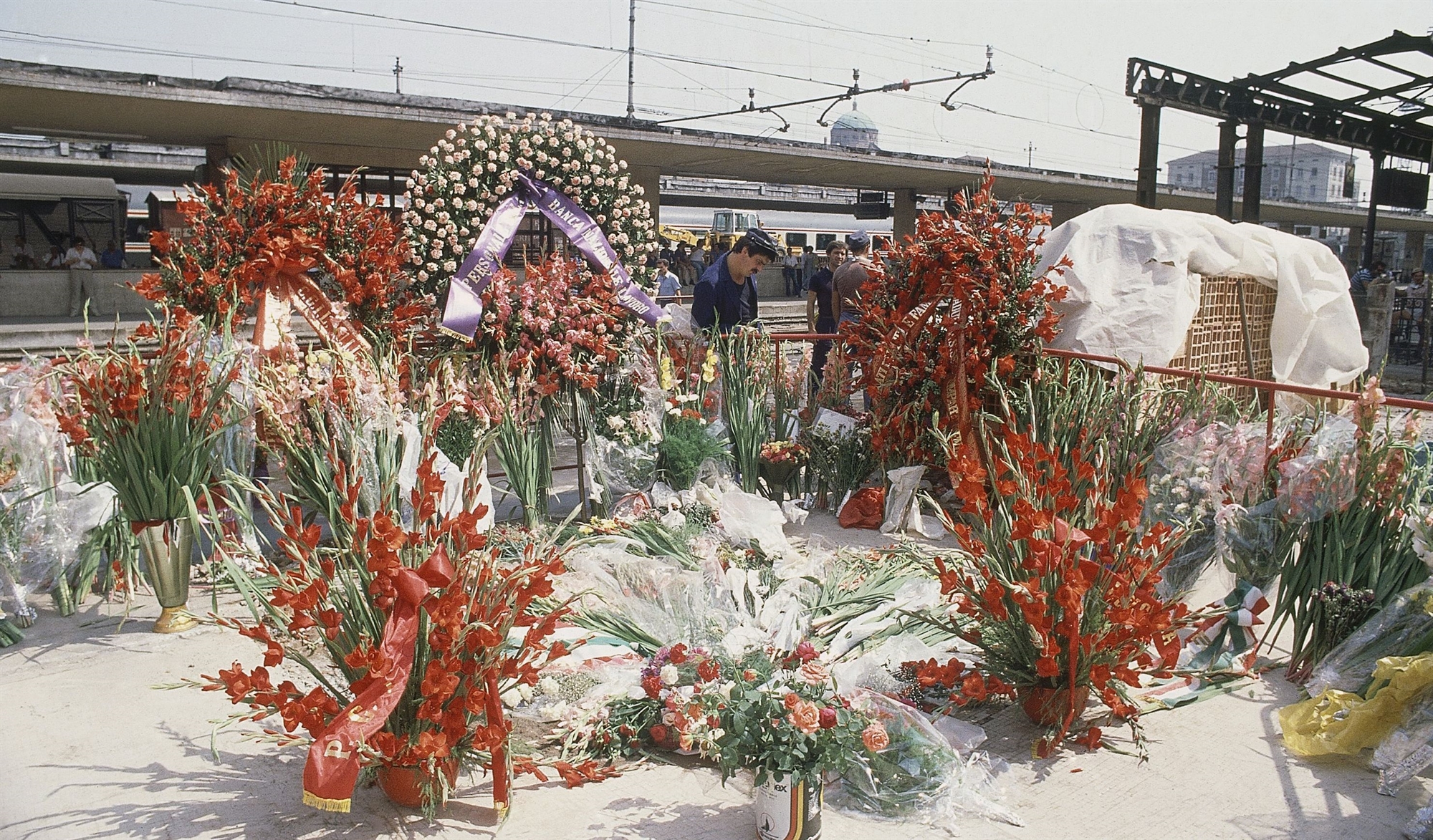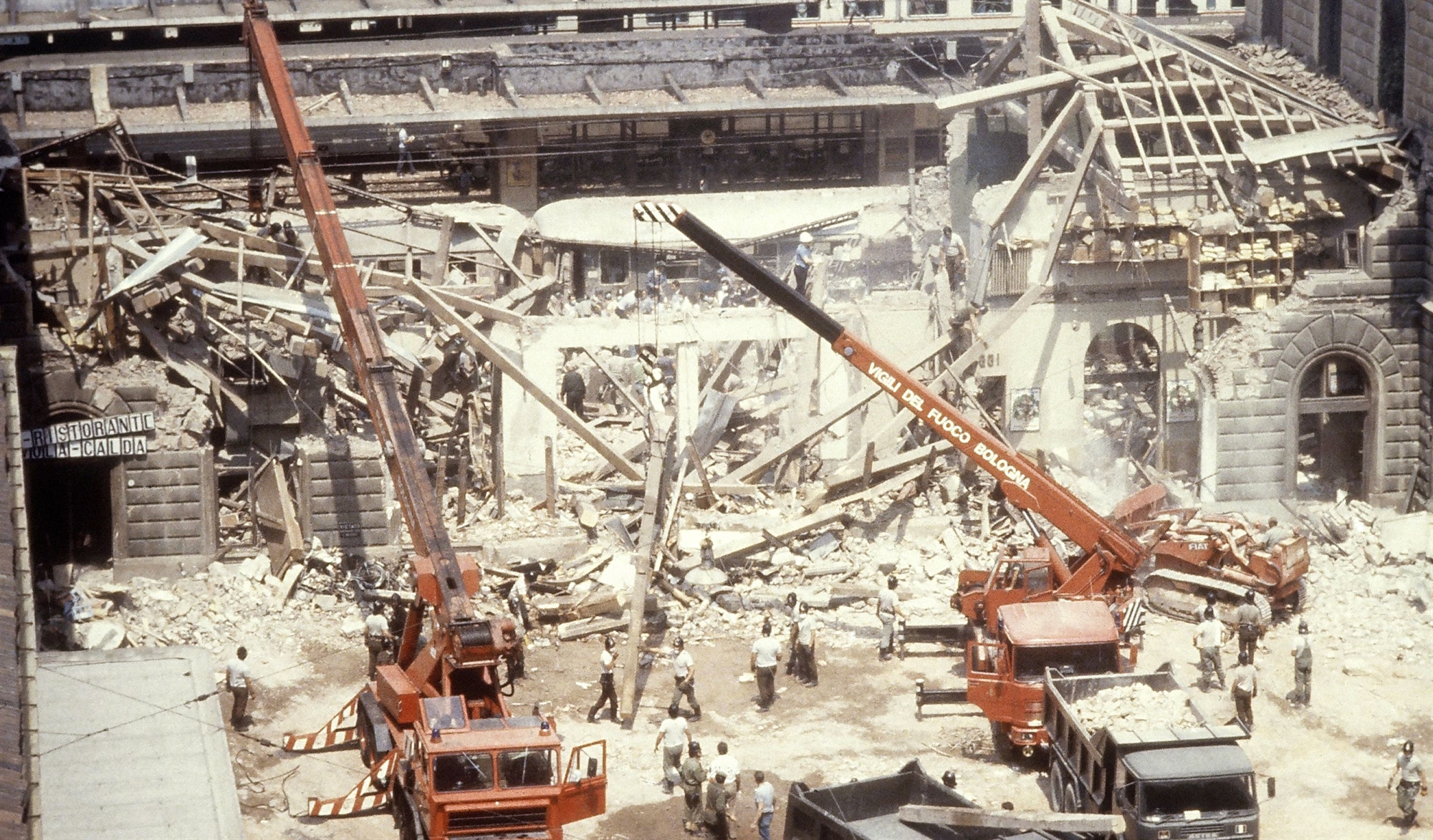
On August 2, 1980, a time bomb exploded in an unattended suitcase at Bologna Central Station, killing 85 people and injuring 200 others. A powerful explosion of 40 kg of explosives in the passenger waiting room caused the roof to collapse and destroy much of the central building, as well as the Adria Express 13534 (Ancona – Basel) train, which was on the platform at the time. The day was Saturday, and the station was full of tourists leaving for the summer holidays.
Initially, the Christian Democrat government led by Francesco Cosiga believed that the explosion was caused by an old boiler in the basement of the station. The President of the Republic, Sandro Pertini, arrived on the same day at the scene of the explosion, saying: “I have no words, we are dealing with the biggest criminal act ever committed in Italy.”


Confusion over the identity of the perpetrators
Very soon, the conclusions showed that it was not the boiler that was to blame, but the terrorist act. The newspaper L’Unita of the Italian Communist Party (IKK) immediately blamed the neo-fascists. Prime Minister Kosiga did the same, stating that “… far-left terrorism strikes at the very heart of the state and its representatives, far-right terrorism prefers actions such as massacres because these acts of extremist violence cause panic and provoke a reaction “.
Relatively soon, the Agencia National Stampa Associate (National Press Office) received a call and someone claimed to represent the neo-fascist organization Nuclei Armadas Revolucionarios (NAR), which had claimed responsibility. The phone call, however, turned out to be from SISMI (Italian military secret service), which was accused during the investigation of misleading the court. A series of misleading phone calls followed in which he “assumed” responsibility for the bombing of a bunch of actors and organizations of diverse backgrounds, with a clear inability to identify them. From the Lebanese who said they were connected sometimes with Fatah and sometimes with the Falangites, Italian extremists, a Swiss journalist who had connections with the Italian secret services, Ka Ge Be (KGB), the P2 Masonic lodge, other Freemasons, mafia, etc. Even the Red Brigades were accused of the massacre…
Prime Minister Koshiga stated that “… if this is confirmed to be a crime, we will have to deal with people who can only be called crazy” and called the bombing “… an attack on human rights and against democracy.” It is worth noting that this terrorist act was the most terrible act, compared only with the atrocities of the Second World War.
After this particular attack, there were many phone calls in which strangers stated that this was only the beginning, since the train stations of Milan and Florence were next in line.
Mass demonstrations took place not only in Bologna, but also in a number of cities in Italy. The demonstrations were combined with criticism of the government and its representatives. In spite of everything, mechanisms of deception arose that managed to confuse the investigation, as a result of which the Bologna case has not been fully clarified to this day, just as the investigation of the terrorist network of Italian neo-fascist circles at the national and international level has not been completed. It appears that a complex network of state interventions, as well as an attempt to attribute the explosion to the cauldron, prevented the immediate mobilization and prompt orientation of the authorities to search for the perpetrators, thereby giving them the necessary time to escape and then disappear and conceal their criminal records. Through obfuscation and methodical disinformation, investigations were focused on irrelevant targets.
Only three members of the far-right organization NAR (Revolutionary Armed Core) were arrested, despite the fact that this organization has committed terrorist acts in the past. Among other things, he claimed responsibility for the bombing of the office of the Italian Communist Party in Rome, which injured 22 people, he blew up the entrance to the city hall of Rome with devastating consequences (1979), he was responsible for the killing of four people. judge investigating neo-fascist crimes while he attacked the Italicus train from Rome to Munich as it passed through the Bologna-Florence tunnel, killing 12 people (August 4, 1974). Some of their terrorist attacks were erroneously attributed to the Red Brigades, but the authorities soon discovered they were wrong. Keep in mind that in 1969 there was a neo-fascist bombing at the Agricultural Bank in Piazza Fontana in Milan, an act that followed the massacre in Bologna.


Moral criminals remain in the shadows
The Bologna massacre occurred at a time when the “strategy of tension”, a historical period with a strong presence of far-right and far-left terrorism in Italy, was ending. The “Strategy of Tension” was a creation of the state, aimed at the extremely massive and politically powerful labor and social movement of the 1960s. Since the late 1960s. demonstrations, uprisings, etc. Terrorist attacks were overwhelmingly attributed to far-left organizations, and final investigations showed that they were perpetrated by far-right groups that worked closely with government agencies. As a result, “black terrorism” provoked an immediate reaction of “red terrorism”, raising tension and fear at the public level to an unreasonable level. Along the way, the fear of citizens gave the state the right to develop laws to which the Italians ceded their rights in the name of security. Fear was the breeding ground for the major political restructuring that developed over time. At the same time, fear served as the basis for tolerance towards the far right.
At this particular time, at the height of the Cold War, the main targets were the Italian left and the IKK, which, however, had already joined the policy of “historic compromise”, supporting the allied governments and their legislative extremes. Because of these events, there was no military dictatorship in Italy, which took place in Greece in 1967, in Chile in 1973, in Turkey in 1971 and 1980. , which gave the right to pass anti-terrorist laws, which had a significant impact on the fundamental rights and freedoms of citizens.
The terrorist attack in Bologna has not yet been solved. The three arrested – Valerio Fiorovanti, Francesca Mabro and Gilberto Cavallini – were only a small part of those responsible for the lethal energy. Neo-fascist Cavallini was sentenced to life in prison in 2020 (40 years later). Also convicted were members of the military intelligence service, so-called “deviant” government officials, Freemasons, parastatal organizations, and collaborators. Moral criminals remain in the background, although the perpetrators are believed to be known; complex network of government interventions, government organizations. Individuals and organizations in and outside Italy have successfully attempted to redirect the investigation to other targets in order to hide the real masterminds and misinform the public.
In 2017, a report from the Italian Parliament was published naming a number of individuals as moral offenders, but the report was made posthumously and no one was alive to be held responsible. In 2020, P2 lodge head Lizio Gelli, businessman and P2 lodge member Umberto Ortolani, and former prefect and head of the Office of the Secret Service of the Ministry of the Interior Federico Umberto d’Amato, Masonic journalist Mario Tedeschi, were named moral culprits, or part of the moral culprits, of the Bologna massacre.
Bologna train station still has a stopped clock that shows 10:25, the time when life stopped for 85 people, while Italian citizens never felt that justice or their elected governments were up to par in the face of the most devastating terrorist. attack that their country met.
Ms. Mary Bosi is Professor of International Security at the University of Piraeus.
Editor: Evantis Chatsivasiliou
Source: Kathimerini
Anna White is a journalist at 247 News Reel, where she writes on world news and current events. She is known for her insightful analysis and compelling storytelling. Anna’s articles have been widely read and shared, earning her a reputation as a talented and respected journalist. She delivers in-depth and accurate understanding of the world’s most pressing issues.